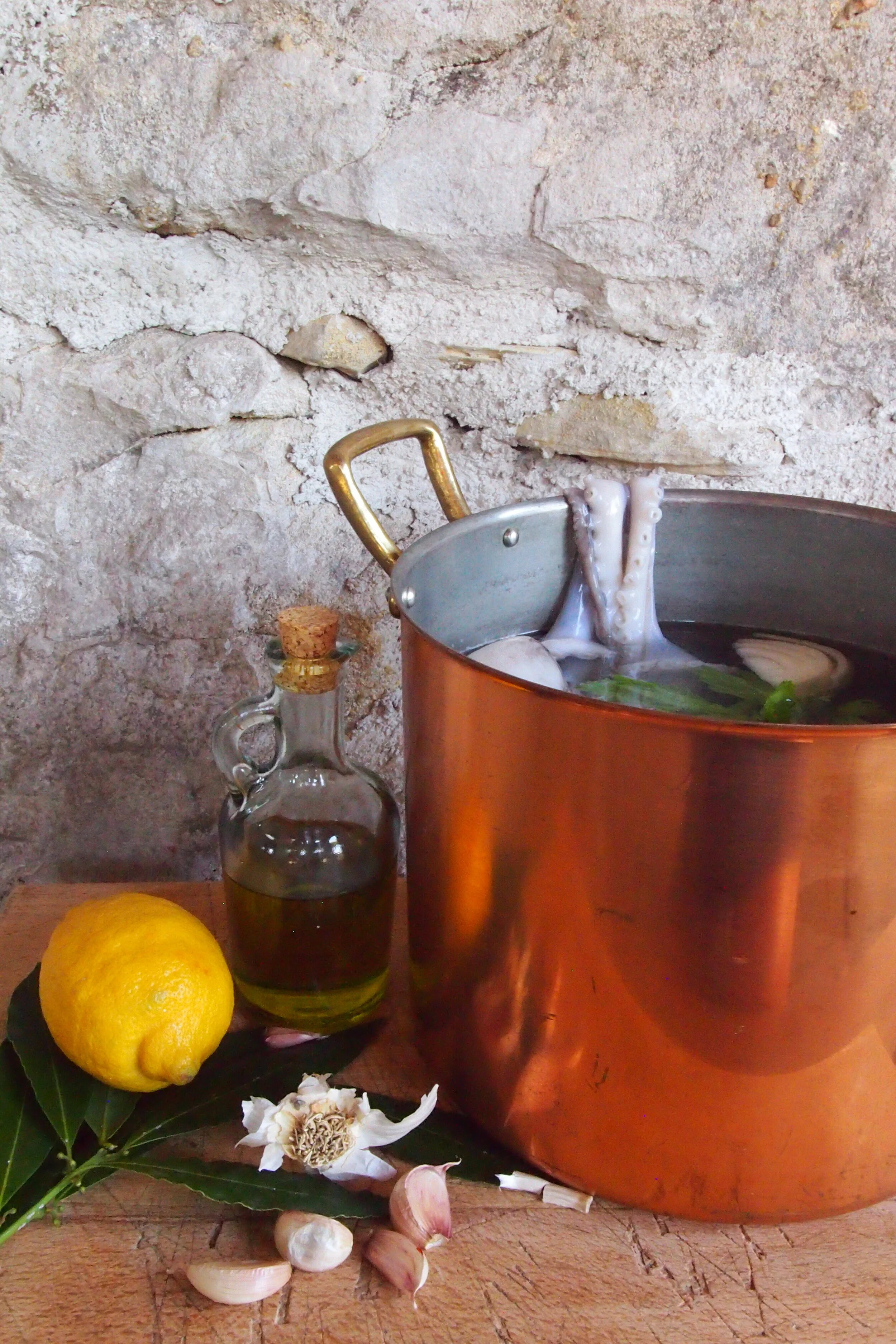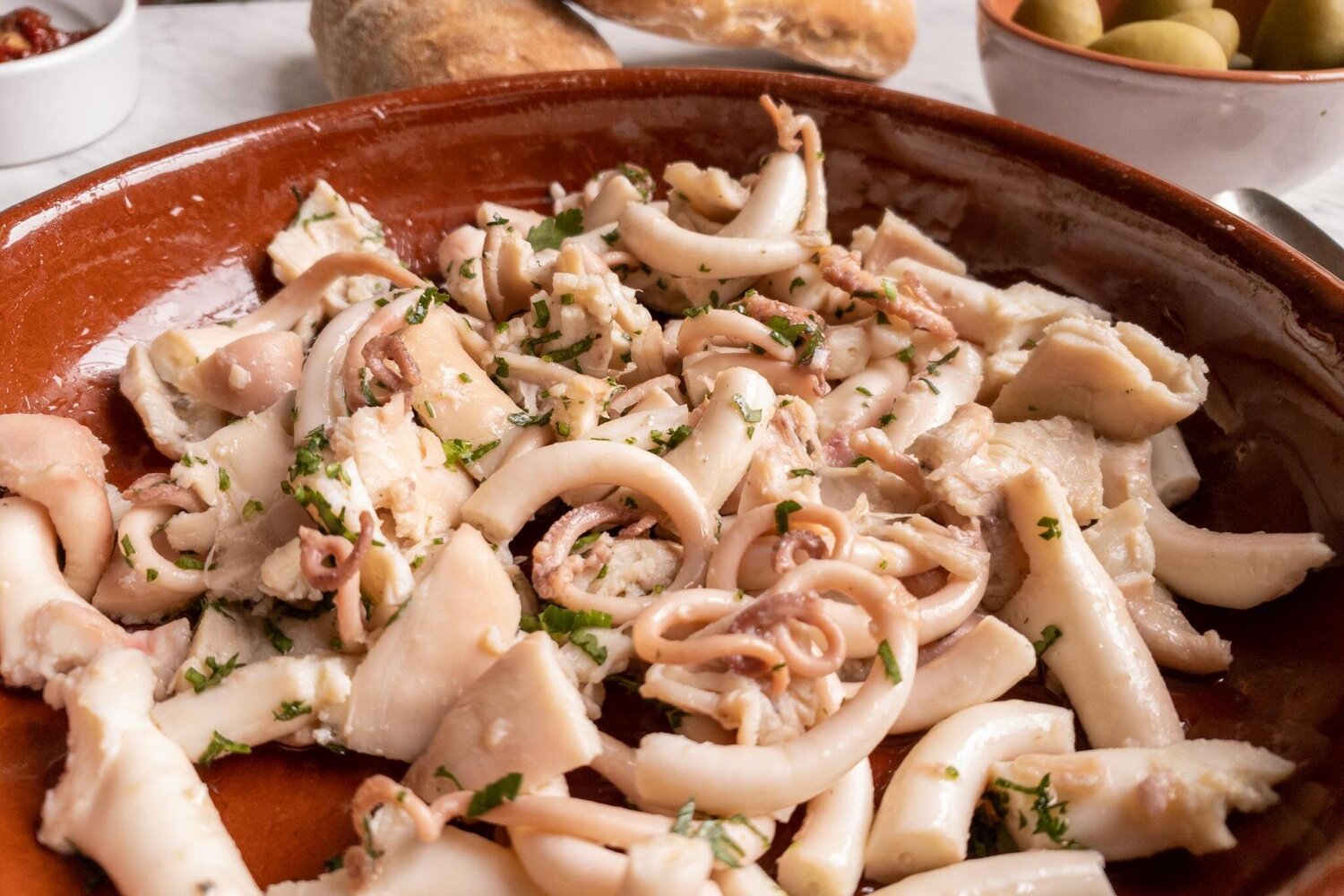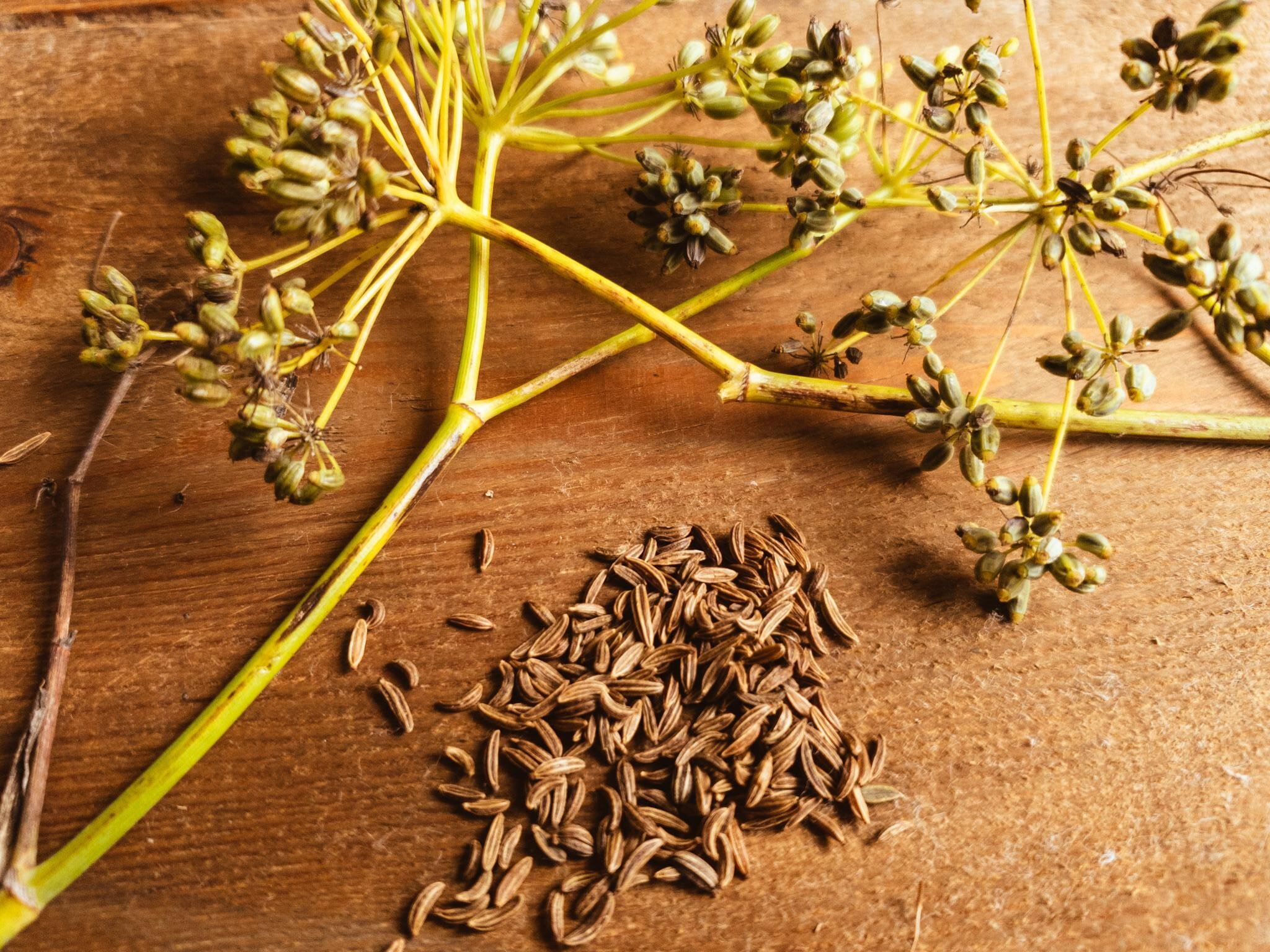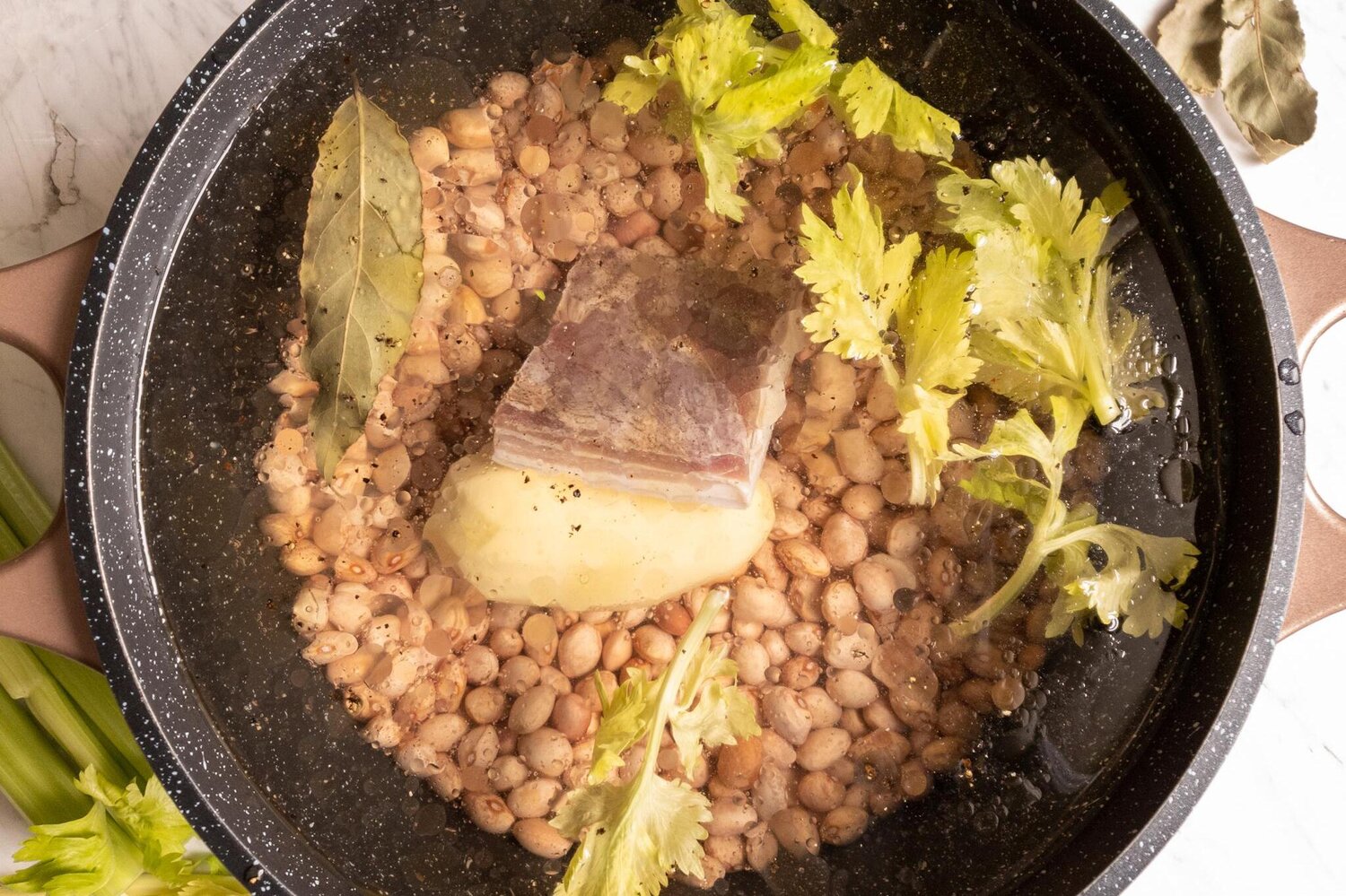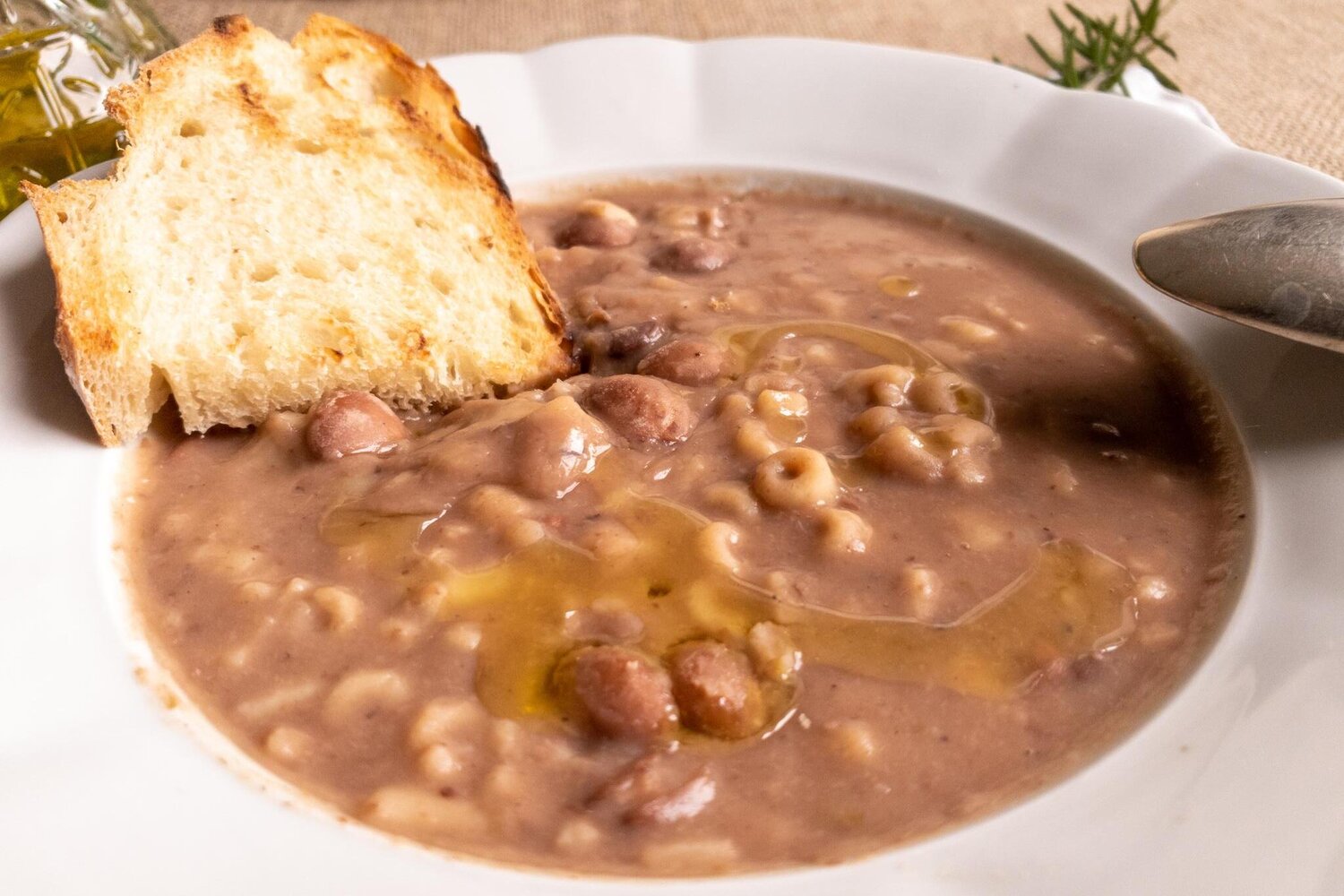Octopus Salad recipe
This dish, with its simplicity, evokes those truly Mediterranean flavours, and has that real Mediterranean feel about it. It has always been incredibly popular and a real success every time it was served, be it at home or in the restaurant where it has been on the menus since I was a child, and has never gone out of fashion. Needles to say, it is one of my favourite dishes, and it is also a family favourite too!
My parents would prepare this dish over and over again and it does evoke some heart worming memories. My grandfather or my dad would go to the fish market and returned home with a full bag of octopus to clean and cook. They would display it on the kitchen table and I was really fascinated by the animal itself just admiring its long tentacles. Now to think back, it was a great biology lesson.
Octopus salad is a very simple but delicious and healthy way to eat octopus. You can eat it on its own just simply dressed or over the bed of fresh rocket salad. Traditionally you would have a nice fresh crunchy piece of bread to pick up the dressing and a glass of chilled wine to further elevate the dish, and this is exactly how my husband loves to eat it. Everyday troubles just somehow seem to disappear, at least for a while.
This tasty octopus salad can be eaten all year round, although having it as a cold salad on a hot summer's day is quite a refreshing treat.
There are a lot of stories of how you should cook the octopus to have it really nice and tender. I always cook it in the evening, then turn the heat off and leave it to cool overnight in its own liquid. The following day is wonderfully tender and surely cool enough to clean and dress.
Ingredients
Serves 4
fresh octopus, cleaned (about 1kg in weight) Most fishmongers will be happy to clean it for you.
1 stick of celery
1 carrot washed and peeled
1 small onion, peeled
1 fresh or dry bay leaf
5 whole black peppercorns
1 clove of garlic, peeled
4 Tbsp (60ml) extra virgin olive oil
7g fresh parsley (plus some extra to be finely chopped and sprinkled over the salad)
juice of 1 lemon (optional)
sea salt, to taste
freshly ground black pepper, to taste
a splash of white vinegar (optional)
Method
To make a dressing, take a small bowl and add extra virgin olive oil, roughly chopped garlic and roughly chopped parsley, lemon juice (if using), a pinch of sea salt and a bit of freshly ground black pepper. Leave the dressing for at least 1 hour for all the flavours to develop.
Wash the cleaned octopus under the cold running water and put it in a large pot together with celery stick, carrot, onion, bay leaf, peppercorns. Fill the pot with cold water enough to completely cover and bring to boil. Turn down the heat and simmer with the lid covered for about 1 hour or until the octopus is cooked and fork tender.
Remove the octopus from the pot and let it cool for a bit until you find the temperature of the octopus manageable. Out of habit and simplicity, I always cook the octopus in the evening and leave it to cool overnight in its own liquid.
Clean the cooked octopus with your hands by sliding the darkish pink layer off the tentacles and the body of the octopus. This should feel very similar to when you roast the peppers and you take the skin off. You should be left with a nice pinkish white meat.
Cut the cleaned octopus head in cubes and tails in slices roughly about 1 square cm in size. Put the octopus in a bowl ready to be dressed.
Sieve the dressing over the bowl with the octopus and adjust seasoning with sea salt and pepper. Add more extra virgin olive oil if you think the dish is a bit too dry and sprinkle with fresh finely chopped flat parsley. For freshness you can add a splash of white wine vinegar, a squeeze of lemon juice or a combination of both. Mix and serve.
Just a thought
You can serve dressed octopus over the bed of fresh rocket salad.
With a dressed octopus you can also create a more substantial salad and serve it as a main dish by adding for example chopped celery sticks, some sweet cherry vine tomatoes, cold boiled potato cut in smaller pieces, black olives and finely sliced red onion.
A lovely idea to serve octopus salad is to put it on a serving dish, together with smaller plates consisting of sun dried tomatoes, a mixture of olives, different types of Mediterranean vegetables in olive oil and for sure plenty of rustic crunchy bread.
Wine suggestion
Malvasia ZGP 2016 by Hedele, Vipavska Dolina.





